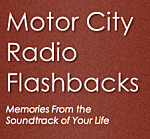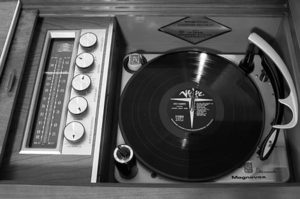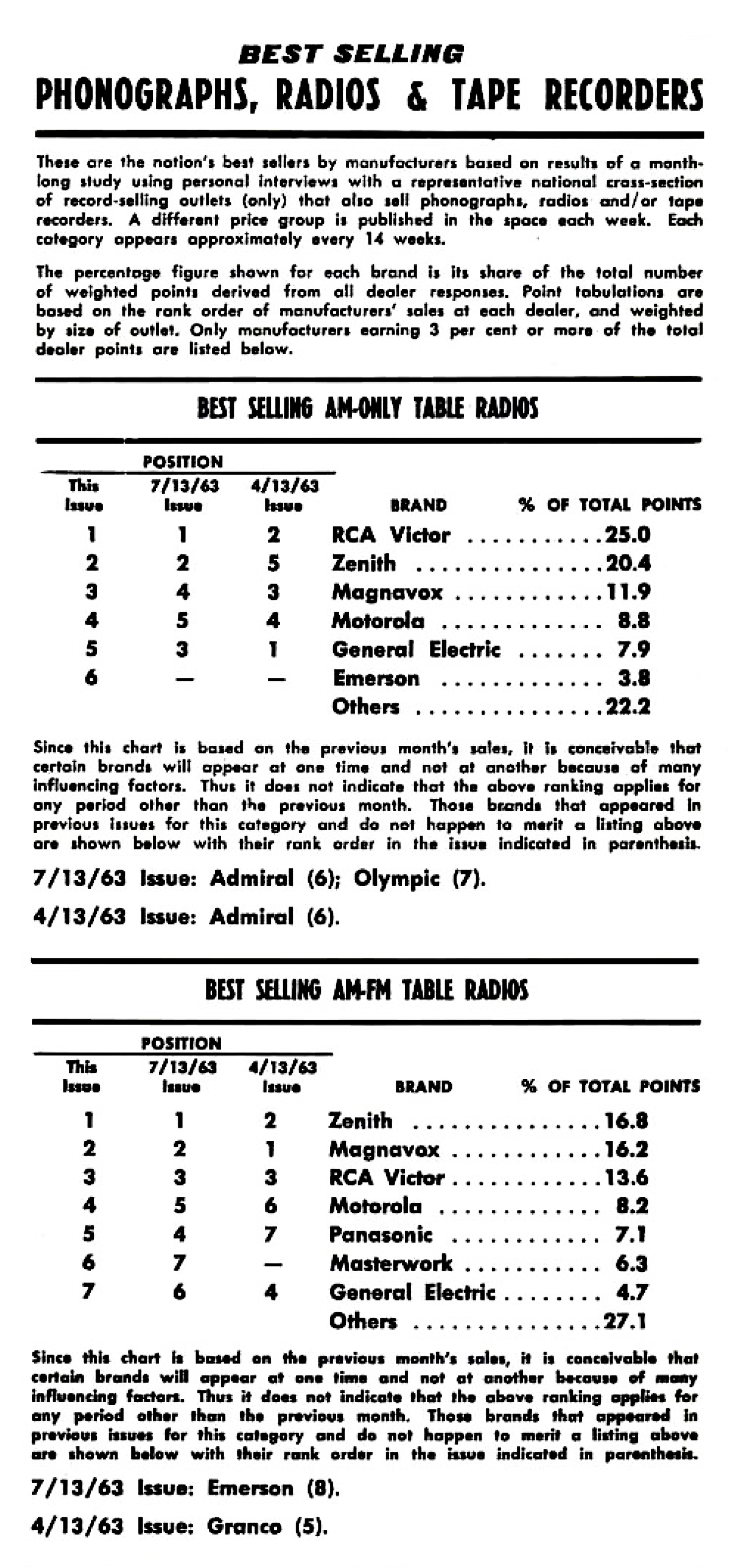 From the MCRFB NEWS archive: 1963
From the MCRFB NEWS archive: 1963
The David Lachenbruch Equipment Newsletter October 12, 1963
FM STEREO, during 1963, has become a nationwide medium – and a nationwide selling opportunity. There are now 250 North American FM stations broadcasting at least part of their schedules in stereo. (This includes 12 in Canada.)

In the U. S., FM stations are broadcasting in stereo in 42 of the 50 States, plus the District of Columbia and Puerto Rico. As of this writing, 48 of the top
50 markets (in terms of population) are served with clear, local multiplex stereo
signals – as well as many, many smaller markets. Many of the larger cities have a wide choice of FM stereo signals. In Chicago, for example, seven stations are broadcasting in stereo now, with the recent addition of WXRT -FM. Detroit has six. San Francisco and Seattle have five each.
We’ve been watching FM stereo closely in this column – and particularly its emergence as a nationwide medium – because we believe it provides the greatest home music instrument selling opportunity since the introduction of the stereo disk.
Now that perhaps more than 80 per cent of the nation’s population is within the range of FM stereo broadcasting, awareness of this new medium should increase rapidly. From the standpoint of the manufacturer, it’s now worthwhile to advertise FM stereo on a national basis. It’s no longer a regional market. Dealers, of course, can be in a position to capitalize on this promotion – even those in areas without FM stereo service now.
EARLIER THIS YEAR, we predicted that a million FM stereo receivers of various kinds would he sold this year. We believe this forecast is still valid; in fact, it may be somewhat on the low side as the result of introduction of large variety of new FM stereo receiving equipment.
The component high fidelity field often foreshadows trends in the packaged audio equipment market. Monophonic FM tuners in the component field have virtually been replaced by stereo tuners. In packaged goods, this trend will spread first to stereo phonographs. By the end of this year it’s a good bet that nearly all radio – phonograph combinations and radio – TV- stereo combinations, except for the low-end models, will have FM stereo.
But right now FM stereo is something you must sell up to in the console field – since many console phonographs are available in three flavors; that is, without radio, with AM-FM and with AM-FM- stereo.
In the portable and table model phonograph field, an increasing number of high-end units are appearing now with FM stereo, extending the versatility of compact stereo instruments. Presently GE, Magnovox, Fisher, Emerson, Pilot, Symphonic, Phonola and others are offering various types of compact stereo phonos with FM stereo.
The biggest growth this year has been in the field of AM-FM stereo table model radios. Nearly all domestic manufacturers, and many importers, now have FM stereo table models.
BUT FM STEREO IS NEW. It doesn’t sell itself. Many prospective customers haven’t even heard of it, or are only vaguely aware of what it is. Helping to create an awareness of this new medium is where real salesmanship comes in FM stereo can be both an impulse item and a step-up item. In the packaged equipment field it’s been largely a step -up so far. We have yet to see a store with a window streamer inviting the public to “Come in and Hear the New FM Stereo.” If color television can be successfully merchandised this way – and it is – why not FM stereo?
Like color television, FM stereo usually has to be demonstrated to be sold. This means a good outdoor antenna, and knowledge of which local stereo station puts out the best signal -and the most easily demonstrable programming – in your area.

It seems inconceivable that any prospective customer should enter a store in search of a stereo phono or FM radio without being treated to a demonstration of FM stereo -and yet, in our own experience, this seems to happen more often than not. Just one question by the salesman – “Have you heard the new FM stereo ? ” – is enough to arouse interest in this latest radio development.
Salesmen should be thoroughly indoctrinated on FM stereo – what it is and how it works. Several radio -phono manufacturers have good booklets that will introduce them to it and give them the proper answers. Electronic Industries Association (1721 De Sales St., N. W., Washington) has an excellent pamphlet on FM stereo which should be must reading for salesmen.
ONE OF THE BEST WAYS to promote the sale of FM stereo equipment is through a tie-in with one or more of the local stereocasting stations. Some stations are aggressive and go out of their way to contact dealers and try to help them sell receivers. Unfortunately many stations aren’t self -starters in this respect. But every FM stereo station wants to increase its stereo audience as rapidly as possible, and most of them will be anxious to help promote FM stereo.
In many cities one of the most persuasive arguments for buying a stereo receiver is the amount of programming available in stereo. Some stations will give you quantities of their program logs for free distribution – so that prospective customers can see what they’re missing by not having stereo. Others have complete promotion kits, with window streamers, leaflets, etc. Most new FM stereo stations will be willing to give you advice on the best type of antenna installation for your store -some will even send a technician around to look it over if you’re having trouble.
If you wait for people to walk in off the street and ask you about FM stereo, you’re not taking maximum advantage of this new entertainment medium. On the other hand, if your store becomes “FM Stereo Headquarters,” if every salesman is well informed about FM stereo and instructed to demonstrate it to every customer, if you are equipped to give a good demonstration, and to give sensible advice on installation – then FM stereo can be the most profitable part of your music equipment sales this fall and winter. END

___
(Information and news source: Billboard; October 12, 1963)
![]()


